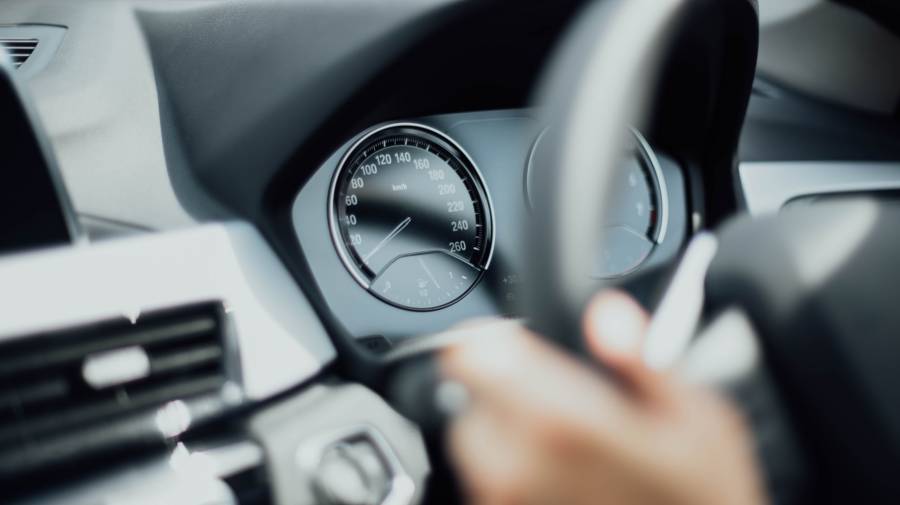Quick Navigation
Engine vacuum is crucial as it ensures a smooth flow of air in the engine. It also controls the speed at which the engine functions.
In this article, you will learn how to increase the vacuum on the engine at idle.

Learn How To Increase The Vacuum On The Engine
The vacuum of an engine at idle should read between 14 in. to 22 in. Hg. If your engine readings are below this, you must increase the vacuum.
If you are wondering how to do this, this comprehensive guide will significantly help you increase the vacuum on the engine even at idle.
Keep The Throttle Closed
When the throttle is closed, the vacuum increases, unlike when it is open. Therefore, to increase the vacuum on the engine, ensure you complete the throttle.
Throttle opening affects two types of vacuum: ported vacuum and manifold vacuum.
When you close the throttle, the manifold vacuum is high, but there is no effect on the ported vacuum in this same state.
However, when the throttle opens, it significantly affects the ported vacuum resulting in the low vacuum on the engine at idle.
It is good to ensure that you close the throttle to fix this problem.
Go Back To Base Settings
Turn the mixture screw outwards (by a 1/8th turn). When the engine produces less power, it results in low vacuum levels on the engine at idle.
Since a common cause could be valve timing or late ignition, you can quickly fix the problem by returning to base settings.
Increase Speed
Increasing the speed generally keeps the vacuum high.
To begin regulating the rate, you might want to conduct a quick test on the cranking rate.
To do this, connect a vacuum gauge to the manifold and add a tachometer to check vacuum levels and rpm at cranking speed.
- First, you will need to warm up the engine.
- Shut the engine down and connect your equipment to test.
- Close the throttle.
- Disable the ignition to ensure the machine will not start. You can opt to use a remote.
- Crank the engine and observe the vacuum reading. Do this for about 10-15 seconds.
A cranking speed of around 200 amp means the pace is steady, and the engine is in perfect condition.
Fix Low Compression
If you have taken care of the speed, but the vacuum is still low, you might be dealing with low compression.
A mechanically healthy engine has 100 PSI per cylinder. If the readings are different from this, then you are experiencing low pressure.
You must repair the loose valves or replace the leaking parts to fix this.
You can also opt for a compression restoration treatment to fix the problem, especially if you are on a budget.
With this, the vacuum on the engine at idle should gradually begin to increase.
Perform A PCV Test
A PCV test accurately shows the average vacuum readings. In this case, do the test for PCV restrictions.
To conduct the test, you need to:
- Confirm the current average vacuum readings.
- If they are lower than expected, pinch the hose to the PCV valve with pliers.
- Repeat the test to check whether the PCV system is transparent.
- After the second test, the vacuum on the engine at idle should start to increase.
- If the vacuum does not improve, look for further PCV restrictions.
Regulate Time
Retarded timing leads to a low than regular vacuum at idle. To ensure the vacuum on the engine at idle is normal, regulate your ignition timing.
However, look out for advanced timing. It may increase the vacuum to levels higher than the normal range.

Loosen Tight Valves
Engine at idle is best when the valves are tight. If the vacuum drops too much at idle, check out for errors with the valves.
The valves might be loose or dragging, leading to the problem. Rectify the problem by ensuring the valves are tight.
Check The Vacuum Gauge
Engine vacuum relies on the comparison between atmospheric pressure and altitude. A standard manifold vacuum of an engine at idle ranges from 18-22 in. Hg.
You will find these ranges in your manual guide, which a manufacturer provides when making the gauge.
Check the vacuum gauge and look out for abnormal readings of your engine vacuum. You might require to troubleshoot your vacuum gauge to fix the problem.
Fix Intake Leak
An intake leak could be one of the reasons why you are experiencing a low vacuum on the engine at idle.
Every time a leak occurs, the vacuum on the engine will drop from the normal range to around 10 in—Hg. Or even less.
To fix the leak, you need to do a compression test.
A compression test helps to determine the exact location of the leak. Once you choose the source of the leak, fix it as soon as possible.
Check Out For Uneven Air/Fuel Mix
A fuel mix is the last thing you would want in your engine. It instantly affects the vacuum levels, which will range lower than average.
A fuel mixture occurs when the air-fuel ratio in one or two cylinders differs from the other cylinders.
If you notice a fuel mix, fix the problem early enough.
Ensure The Vacuum Pressure Is Accurate
Talking about vacuum, the pressure difference between the manifold and outside pressure results in a vacuum.
With this pressure difference, there is enough air going into the engine.
However, if the vacuum pressure is inaccurate, the engine will have an uneven flow of air. It is therefore vital to ensure that the vacuum pressure is correct.
Plugged Exhaust
It is easy to test and know the exhaust is the cause of all the problems with your vacuum on the engine at idle.
In this case, run your car engine at around 2500 rpm for not less than 10 seconds.
The vacuum should drop but immediately increase once you close the throttle. If it does not improve, the exhaust is the cause of the problem.
Fix the restrictions on your exhaust, and you should notice some vacuum increase.
Faulty Piston Rings
Faulty piston rings have several symptoms, including; white or gray exhaust smoke, excessive oil consumption, lower power for acceleration, and overall loss of control.
A faulty piston ring will affect the vacuum on an engine at idle due to the low acceleration power.
Faulty rings affect the engine’s combustion chamber causing a loss of pressure. As you saw above, the vacuum on the engine heavily relies on tension.
To fix this problem, you need to replace the piston rings.
Why Should I Increase The Vacuum On The Engine At Idle?
Correct vacuum means the proper functioning of your vehicle’s engine. Increasing the vacuum on the engine at idle is necessary for the lifespan of your car.
Raising it to the required levels will save you the costs of further damages that might occur if you neglect the issue.
Take Away
A healthy engine at idle shows perfect vacuum readings. It is vital always to ensure it is at its best to run your vehicle’s engine properly.
We hope you can now comfortably increase your engine’s vacuum.

Kevin has been hanging around cars and automobile magazines since he knew what a car is. He grew up in his father’s 1995 Mercedes E320 Wagon and Volkwagon Phaeton W12 2004. He rides his first car, a manual 1979 Porche 911SC.
Currently, he owns an Acura Integra GS-R. During his childhood, he showed a keen interest in how things actually work and fix them. This passion transforms into his eternal love for cars and bestows him an ideal position in one of the leading automobile companies; whenever he finds time, he takes out his Acura and opts for the longest possible route to find hidden wholesome pleasure in a road trip.
Want to read some of the articles written by Kevin? Head to our blog section to find out all the articles written by Kevin.



